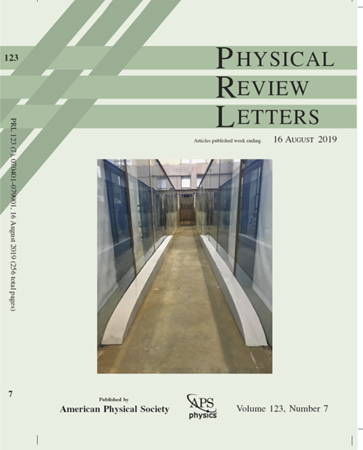非微扰和近微扰状态下的 QCD 运行耦合
IF 9
1区 物理与天体物理
Q1 PHYSICS, MULTIDISCIPLINARY
引用次数: 0
摘要
我们利用解析延续将强力耦合的规-引力对偶非微扰描述扩展到微扰效应变得重要的过渡、近微扰机制。通过将耦合空间中的非物理区域排除在复平面奇点流之外,我们得出了大距离和短距离相关尺度之间的特定关系;通过要求最大解析性,这种关系被唯一固定下来。统一的有效耦合模型准确地描述了非微扰和近微扰区域的数据。本文章由计算机程序翻译,如有差异,请以英文原文为准。
QCD Running Coupling in the Nonperturbative and Near-Perturbative Regimes
We use analytic continuation to extend the gauge-gravity duality nonperturbative description of the strong force coupling into the transition, near-perturbative, regime where perturbative effects become important. By excluding the unphysical region in coupling space from the flow of singularities in the complex plane, we derive a specific relation between the scales relevant at large and short distances; this relation is uniquely fixed by requiring maximal analyticity. The unified effective coupling model gives an accurate description of the data in the nonperturbative and the near-perturbative regions.
求助全文
通过发布文献求助,成功后即可免费获取论文全文。
去求助
来源期刊

Physical review letters
物理-物理:综合
CiteScore
16.50
自引率
7.00%
发文量
2673
审稿时长
2.2 months
期刊介绍:
Physical review letters(PRL)covers the full range of applied, fundamental, and interdisciplinary physics research topics:
General physics, including statistical and quantum mechanics and quantum information
Gravitation, astrophysics, and cosmology
Elementary particles and fields
Nuclear physics
Atomic, molecular, and optical physics
Nonlinear dynamics, fluid dynamics, and classical optics
Plasma and beam physics
Condensed matter and materials physics
Polymers, soft matter, biological, climate and interdisciplinary physics, including networks
 求助内容:
求助内容: 应助结果提醒方式:
应助结果提醒方式:


